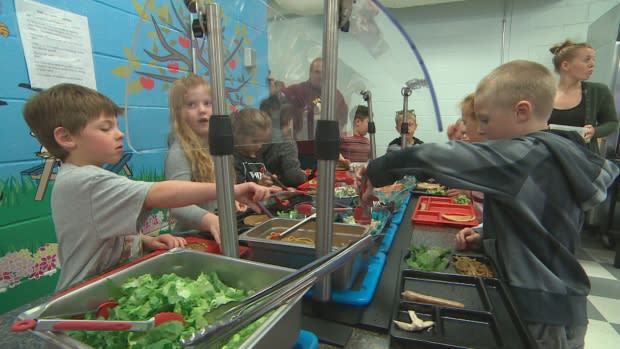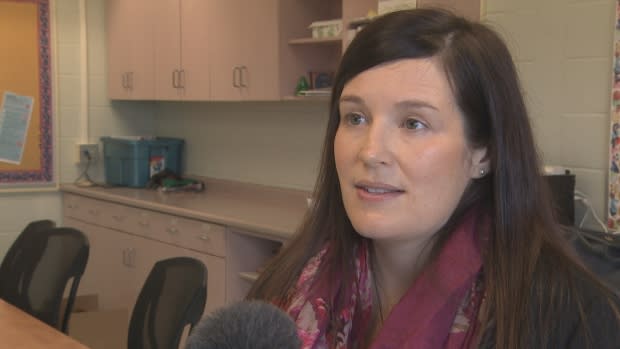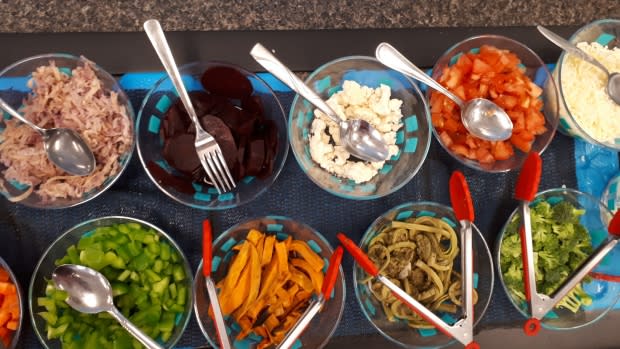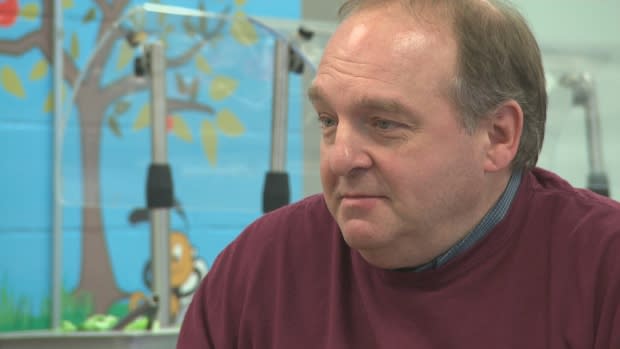Annapolis Valley school offering pay-what-you-can lunch
An elementary school in Nova Scotia's Annapolis Valley is making sure every student gets a healthy meal at lunchtime by adopting a pay-what-you-can model in their cafeteria.
The Berwick and District School started a pilot project in early May that is a joint effort between parent and community volunteers, the school and a nutritionist from the Nova Scotia Health Authority.
"We know that food security is an issue, we know that kids show up to school hungry, we need a confidential, stigma-free way to address that," said nutritionist Sarah Mullen.
Mullen said she looked at similar pay-what-you-can models in British Columbia and Newfoundland to see what some of the best practices are that could work in rural Nova Scotia.
One in five children in Nova Scotia face food insecurity.

"It shows up in things like behaviour, concentration, creativity and attendance, and so this all kind of feeds into academic performance," said Mullen. "And eventually down the line, whether a student graduates."
The cafeteria has been offering homemade meals and a self-serve salad bar since the beginning of the school year, in an effort to encourage healthy eating and steer kids away from processed foods.
This effort was due largely in part to Jenny Osburn, a former restaurant owner, whose oldest son attends Berwick and District School.
Osburn worked closely with principal Bill Doucet and the cafeteria staff to bring in the salad bar, and come up with healthy recipes that would appeal to kids.
Doucet said he was surprised by the instant popularity of the salad bar.

"It's really interesting to watch kids that I know may have never seen anything green on their plate before, trying out different vegetables," he said.
There are 277 students enrolled at the school. Doucet said they serve, on average, 90 to 100 meals a day, and the remaining students bring a lunch from home.
But while the made-from-scratch meals and salad bar were a hit with many, Osburn noticed a problem.
"I really quickly realized by doing that, we were creating a bit of a barrier to kids because there were kids that wanted to have this gorgeous colourful salad bar and yummy food, and they couldn't afford it," she said.
No luck with other solutions
Doucet, an educator for 33 years, said in every school he's worked in, there have been kids who weren't in a position to bring a lunch or pay for one at the cafeteria.
Before landing on the pay-what-you-can model, Doucet said they tried a few different things to tackle the problem of food insecurity.
"We made sandwiches for kids, we used to make soup and those were all good attempts until the kid next to them started having this amazing salad," said Doucet.

After that, Doucet said they tried a ticket system. Students would go to the office to get a lunch ticket and the office would cover the cost.
"The problem with that is that it stigmatized the kids that didn't bring a lunch," said Doucet. "They would have something special, something out of the ordinary, that they'd have to come down here and present.
"So from that stage, the pay-what-you-can system was born."
How the program works
Parents get a letter each month, along with an order form and menu. There's a sliding price scale that goes from zero to $4.
A community volunteer sorts out the meal orders, keeping all payment information confidential.
"It gives people real confidence, I think, that they can get their lunch without embarrassment," said Osburn.

Since the project began less than a month ago, it's partnered with the Western Kings Memorial Health Society and has received donations from the Mud Creek Rotary of Wolfville and Friends of Agriculture in Nova Scotia.
Data is being collected to determine the long-term viability of the project.
"The hope all along has been that this is something with potential, something that we could see done in more schools here in the [Annapolis] Valley," said Mullen.
MORE TOP STORIES

